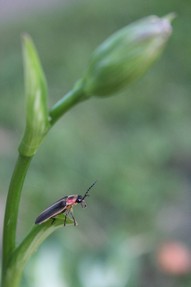 Fireflies flash according to the intensity of surrounding light. On dark nights, they flash often and late into the night. They won't flash much when there is a bright full moon or if there's too much artificial light.
Fireflies flash according to the intensity of surrounding light. On dark nights, they flash often and late into the night. They won't flash much when there is a bright full moon or if there's too much artificial light.
TO ATTRACT FIREFLIES:
~~ Reduce the amount of lighting on your property because external lights interfere with the firefly's mating ritual.
~~ Change your outdoor lighting to lights that operate as a motion detector so they don't produce continuous light.
~~ Install lights that are low to the ground and that point straight down instead of shining in all directions.
~~ Don't use bug zappers because they can also kill beneficial insects. Instead, install bat or purple martin houses, or bring frogs into your garden to eliminate mosquitoes and other insect pests.
~~ Don't use chemical fertilizers, or broad spectrum pesticides. which can poison fireflies and other beneficial insects. Use compost, compost tea, and fish and seaweed mixes instead. If you decide you must use pesticides, use an organic one or insecticidal soap. Look for lighting bugs before you spray.
~~ Adult fireflies rest during the day in tall grass, vegetation, or low tree branches so they can stay cool. If your yard gets dry, you could add a bird bath or fountain to the area where they're likely to be living.
~~ Firefly larvae eat earthworms, snails and other soft bodied animals, which live in rich, organic soil. If you have a manicured lawn, create a small area for a firefly habitat.
Photo by anneh632 on flickr.


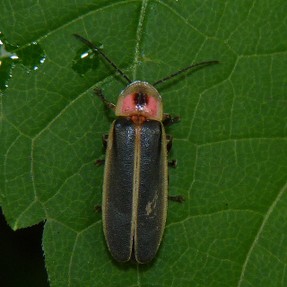 Most species of fireflies live in warm, humid areas of the world, where they can be seen throughout the year.
Most species of fireflies live in warm, humid areas of the world, where they can be seen throughout the year.


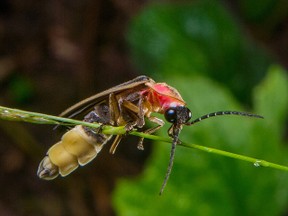 There are many species of fireflies, but not every species flashes. Sometimes in the species that do flash, only one sex has that ability.
There are many species of fireflies, but not every species flashes. Sometimes in the species that do flash, only one sex has that ability. Fireflies flash according to the intensity of surrounding light. On dark nights, they flash often and late into the night. They won't flash much when there is a bright full moon or if there's too much artificial light.
Fireflies flash according to the intensity of surrounding light. On dark nights, they flash often and late into the night. They won't flash much when there is a bright full moon or if there's too much artificial light.





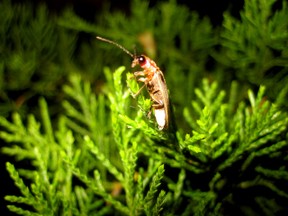





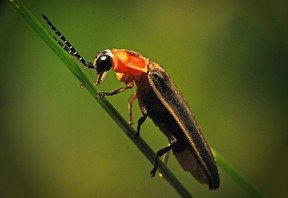 Medical research laboratories throughout the world use these two chemicals in medical research for heart disease, cystic fibrosis, multiple sclerosis, cancer, antibiotic testing, and muscular dystrophy.
Medical research laboratories throughout the world use these two chemicals in medical research for heart disease, cystic fibrosis, multiple sclerosis, cancer, antibiotic testing, and muscular dystrophy.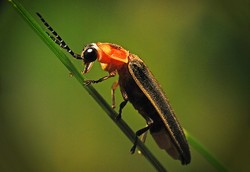

 I Loved to Read in Grade School (in the 1960s)on 09/29/2018
I Loved to Read in Grade School (in the 1960s)on 09/29/2018
 Halloween Memories from the 1960son 09/17/2018
Halloween Memories from the 1960son 09/17/2018
 What on Earth is Earthing?on 06/03/2015
What on Earth is Earthing?on 06/03/2015
 Worm Manure (Castings) Is The Best Organic Fertilizeron 05/25/2015
Worm Manure (Castings) Is The Best Organic Fertilizeron 05/25/2015

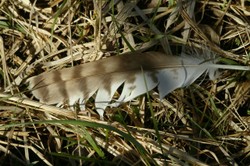
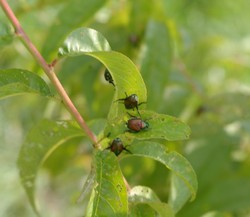
Comments
We called them lightning bugs, we would catch them, put them in a jar then release them before we had to in the house to go to bed. That was sooooo long ago. Fun memory you stirred up!
burntchestnut, In childhood, I applied both names to these luminous beings. In my family, we knew them as fireflies, but almost everyone else, especially kids, referred to them as lightning bugs.
This has been a good year for fireflies. On cloudy nights, I especially enjoy the high fliers, which can seem like flashing stars at the tops of the towering Eastern white pines in my front yard.
Thank you for the reminder of catching and releasing fireflies in childhood. That was always a fun activity.
Fabulous. I really enjoyed it. Am so thankful you're writing for Wizzley :-)